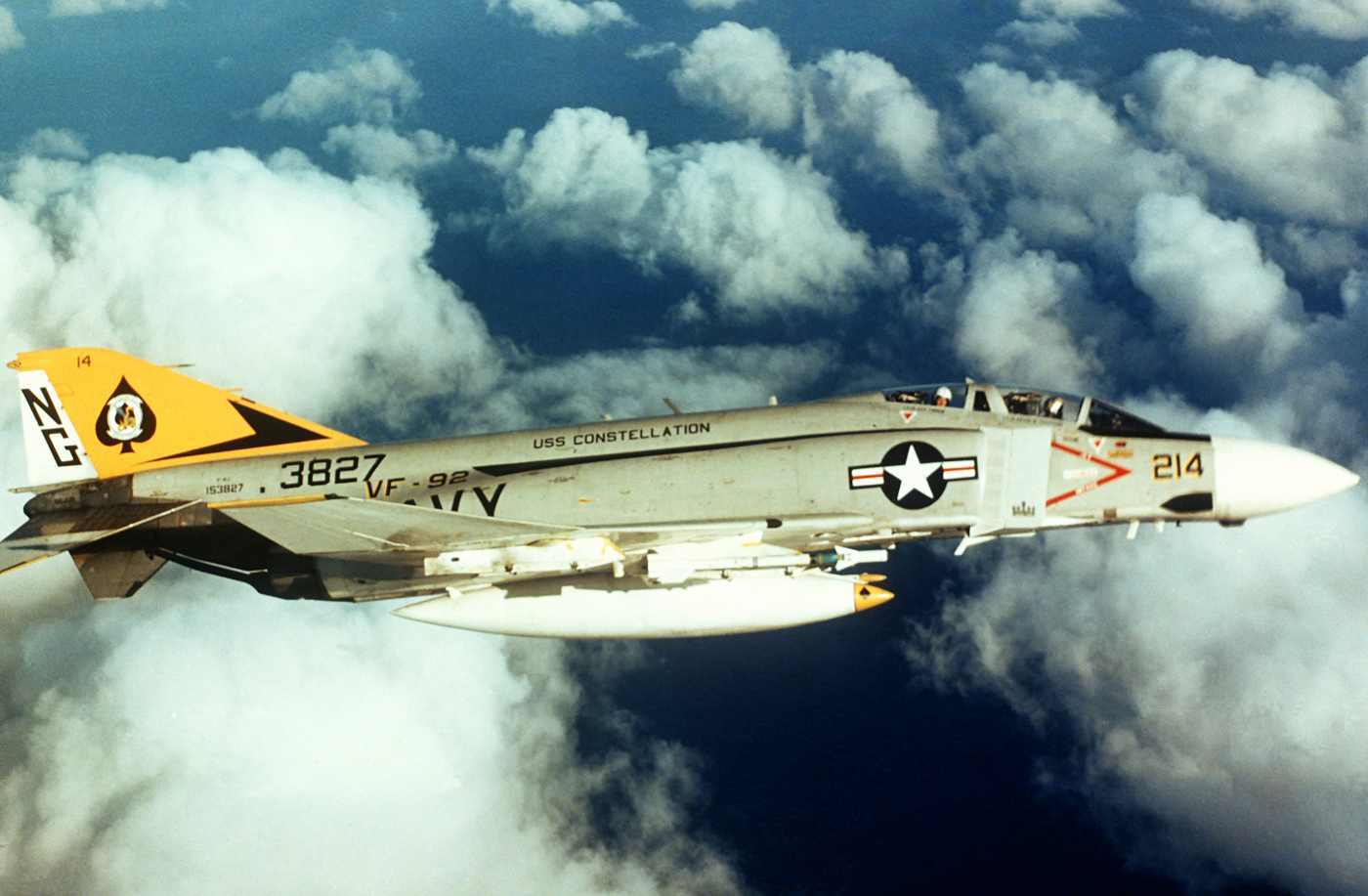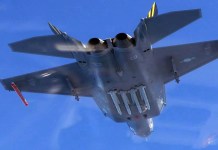A video has surfaced on social media showing a US Navy McDonnell Douglas F-4 Phantom II crashing during an attempted take-off.
The F-4 Phantom II is known to be America’s most-produced supersonic military aircraft in history. It is a two-seat, twin-engine, all-weather, long-range supersonic jet interceptor and fighter bomber originally developed by McDonnell Douglas for the US Navy.
The Phantom II entered service with the US Navy in 1961. Because of its high adaptability, it was also adopted by the US Marine Corps (USMC) and the US Air Force (USAF), and by the mid-1960s, it had become a mainstay of US military aviation.
Ron Eisele, an Aviation Historian based in Sussex, England, shared a terrifying video showing an F-4 Phantom II crashed at St. Louis, Missouri, during an attempted take-off.
In the video, the F-4 can be seen lifting off from the runway and climbing steeply, going into a vertical attitude, after which it loses speed and falls flatly, impacting the runway and exploding into a huge fireball. Black smoke billows upward from flames and drifts upward.
The incident occurred over fifty years ago, on March 20, 1968, and involved an F-4J just off the assembly line.
20 March 1968. F-4J Phantom crashed after take-off from St. Louis Missouri due to manufacturing defect. Pilot C. D. "Pete" Pilcher (Production Test Pilot, McDonnell Douglas Corporation) and Radar Observer Harvey A. Begay both ejected and survived the incident. pic.twitter.com/hTJ0uSftt8
— Ron Eisele (@ron_eisele) March 19, 2023
CD “Pete” Pilcher, a Production Test Pilot at McDonnell Douglas Corporation, piloted the Phantom II. The aircraft also had Radar Observer Harvey A. Begay in the backseat position. Both crew members managed to eject and survive the ejection.
The F-4’s control stick well, where the base of the stick is attached to the various control cables, is square in shape and one inch deep. It is only larger than the stick base to allow a full range of motion.
A canvas boot was attached to the bottom of the stick, covering the well to prevent objects from entering it and jamming it.
The procedure for the take-off for the Phantom was to pull the stick all the way back, then push it forward a little, about an inch, and hold that stick position until the nose lifted off to the desired climb angle.
The F-4J in question was brand new, just off the assembly line. The pilot of the aircraft, Pete Pilcher, lifted off, but his stick jammed in the aft position, making him unable to lower the nose. He and his backseater ejected at about 200 feet and managed to survive.
The maintenance crew had mistakenly left a wrench socket in the cockpit, which got lodged inside the control stick well during the take-off, jamming the stick in the full aft position and preventing any forward motion stick.
The F-4 Phantom II
The F-4 Phantom II is a large fighter with a maximum speed of Mach 2.2, capable of carrying 18,000 pounds (8,400 kilograms) of weapons on nine external hardpoints, including air-to-air missiles, air-to-surface missiles and a variety of bombs.
It was initially designed without an internal cannon, however, an M61 Vulcan rotary cannon was added to the later models.
The F-4 was used widely during the Vietnam war, where it served as the primary air superiority fighter for the US military, and late in the war also became a significant ground attack and aerial reconnaissance platform.
The F-4J, in particular, was equipped with much-enhanced radar and avionics, as well as improved aerodynamic design. Also, it had an improved J-79 engine with a longer afterburner nozzle. The US Navy’s only Vietnam aces flew the F-4J for all of their five kills.
US Navy Lieutenant Randy “Duke” Cunningham was the first American pilot ace of the Vietnam war, flying F-4J Phantoms. He was assigned to the Kitty Hawk-class supercarrier, USS Constellation, in 1971 and was crewed with Lieutenant “Willy” Driscoll as his Radar Intercept Officer.
On January 19, 1972, Duke engaged two North Vietnamese MiG-21s at treetop level and scored his first kill by shooting down one of the MiGs using a heat-seeking AIM-9 Sidewinder missile.

Thereafter, on May 8, 1972, he engaged three MiG-17s over North Vietnam and destroyed one of them, which was tailing his wingman while being fired upon by the other two MiGs.
Only two days later, Duke’s section was on a SEAD operation south of Hanoi when 22 enemy fighters attacked them. Intense aerial fighting ensued, and Duke quickly destroyed a MiG-17 with an AIM-9 missile and then turned to assist the other Phantoms, which were now cornered by enemy aircraft. He managed to save his group’s Executive Officer by downing his second MiG-17.
With the arrival of more MiGs, the American fighters started moving toward the coast when Duke encountered another MiG coming head-on, however, this one was piloted by Colonel Toon, who was a leading North Vietnamese ace.
Duke soon realized that he was engaging an extraordinary pilot, and after a four-minute duel, he managed to take down Colonel Toon. After their third kill, though, Duke and Willy were forced to eject into the Gulf of Tonkin after it was hit by a surface-to-air missile (SAM) hit their F-4 while they were heading home.
Throughout the 1970s and 1980s, the F-4 continued to form a cornerstone of the US military, being gradually replaced by more advanced fighter jets like the F-15 Eagle and F-16 Fighting Falcon in the USAF, the F-14 Tomcat in the US Navy, and the F/A-18 Hornet in the US Navy and Marine Corps.
The Phantom IIs were also used for reconnaissance and suppression of enemy air defenses (SEAD) by the US in the 1991 Gulf War before it finally left the service in 1996.
The militaries of 11 other countries also operated the F-4. Of these, the Israeli Phantoms were extensively used in many Arab-Israeli wars, while Iran also used its massive fleet of F-4s, which it had acquired before the fall of Shah, during the Iran-Iraq war.
- Contact the author at tanmaykadam700@gmail.com
- Follow EurAsian Times on Google News




